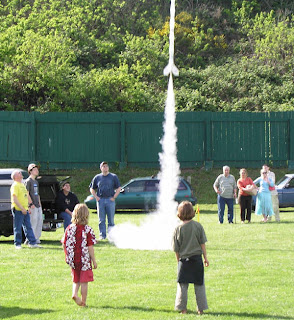
The whole concept is pretty simple. Build a model rocket kit consisting of a paper body tube and balsa or plastic fins, or nose cone , assemble a plastic parachute . (Assembly simplified) Launch and recover this rocket.
Replace motor, igniter and launch again. Pretty simple right?
I thought it was when I first got my start in model rocketry in 1974 . On my third flight of an Estes Alpha the rubber shock cord broke and the nose cone and chute drifted over a mile down range before I was able to retrieve it. The main body tube fell to earth from over a 1000' . And at that time there was no Internet, just me. I could not just hop on line and ask a question and get an almost instant answer. A thought process was where my answer would be found. 1.examine the shock cord yup burnt clean thru, humm. . 2. examine the chute for damage, small pin holes and melted plastic. humm ? BINGO!! not enough wadding to protect the shock cord and parachute. So you see for every ten successful flights, you may have one that does not go according to plan. You will be asking yourself the question, what went wrong ? So weather you realize it or not . It is rocket science.
QUICK TIP : Shock cords in some model rocket kits today use Kevlar and elastic for shock cords. This is a big improvement over the rubber bands used in the past. Check the Web Resources and Vendors section for Kevlar shock cord. Or go to http://www.semroc.com/ or here.http://www.semroc.com/Store/scripts/prodList.asp?idCategory=70

